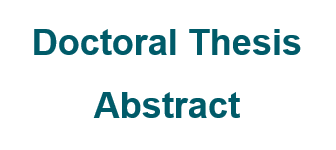Bases for the development of management strategies for fruit flies (Diptera: tephritidae)
DOI:
https://doi.org/10.31285/AGRO.26.1507Keywords:
C. capitata, A. fraterculus, compatibility, SIT, spatial distributionAbstract
Ceratitis capitata and Anastrepha fraterculus (Diptera: Tephritidae) are polyphagous pests that cause yield and quality losses in fruit trees and increase production costs because they are quarantine pest in some export destination countries. The sterile insect technique (SIT), highly selective, has been implemented in several countries to control C. capitata, while for A. fraterculus the technique development is being investigated. The following were carried out: 1-analysis of fluctuation and spatial distribution of both wild pest species, and the correlation between the captures in traps and the levels of fruit damage, 2-analysis of sexual compatibility between local A. fraterculus and a population from Argentina and 3-dispersion analysis of sterile males of C. capitata in two regions. Seventy-nine Jackson traps with trimedlure and 88 McPhail traps with torula were monitored, and 5,700 fruits were sampled, in three fruit farms, during two seasons. In field cages, the sexual isolation index (ISI), and the kind of pairs formed according to the origin of sexes were determined. Besides, 20,000 sterile males of C. capitata TslV8 were released in two areas, and a network of 54 Jackson traps with trimedlure was installed, forming five rings concentric to the release points. Dispersion and longevity were estimated. Spearman's correlation coefficient between captures and percentage of infested fruits was 0.62 (P = 0.0001) for C. capitata with captures in McPhail traps, 0.34 (P = 0.02) with captures in Jackson trap, and for A. fraterculus 0.59 (P = 0.0001) with captures in McPhail traps. The ISI was significantly different from zero due to higher performance of Argentine adults. There were no differences between the frequency of the Uruguayan homotypic couples and the heterotypic couples, while the frequency of the Argentine homotypic couples was higher than the rest. Sterile males of C. capitata dispersed a standard distance of 127 m and 131 m to Salto and San José, respectively.
Downloads

Downloads
Published
How to Cite
Issue
Section
License
Copyright (c) 2022 Agrociencia Uruguay

This work is licensed under a Creative Commons Attribution 4.0 International License.
| Article metrics | |
|---|---|
| Abstract views | |
| Galley vies | |
| PDF Views | |
| HTML views | |
| Other views | |

















